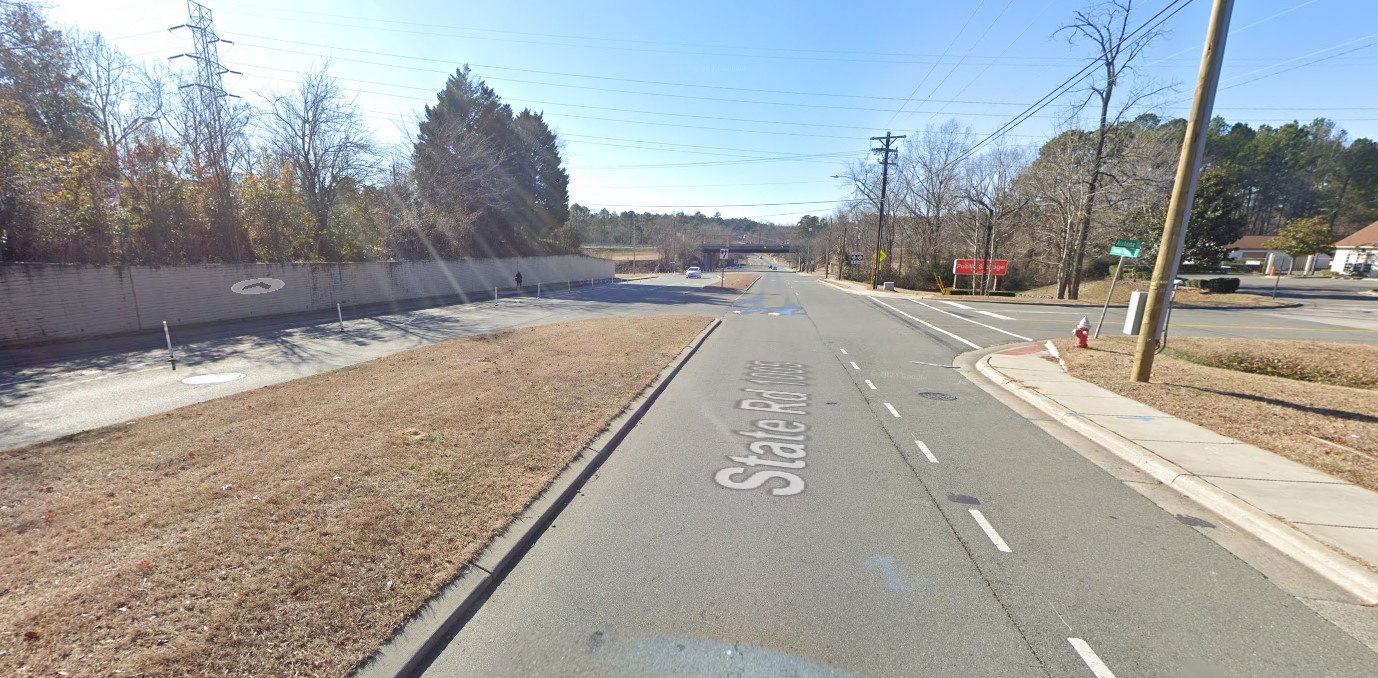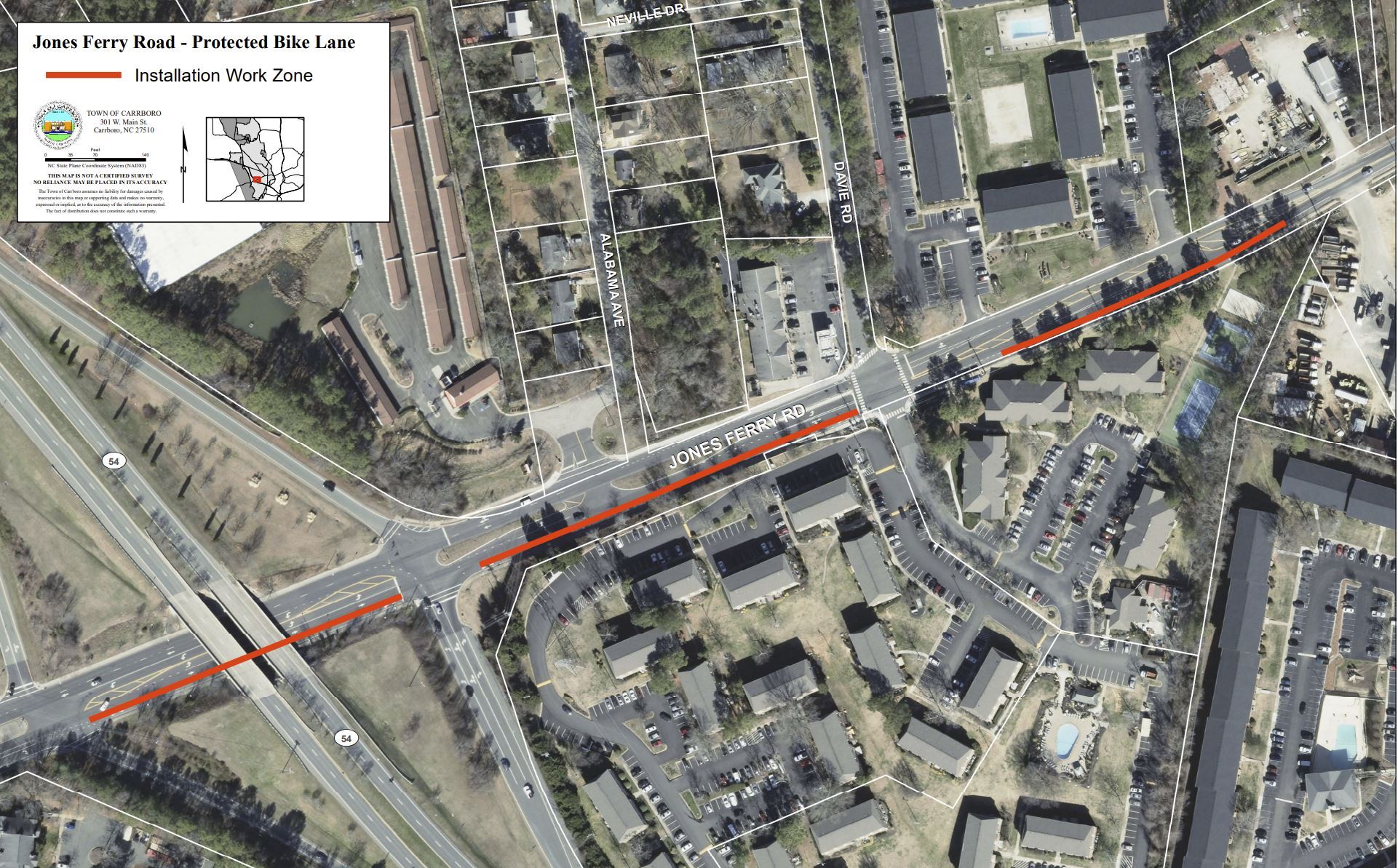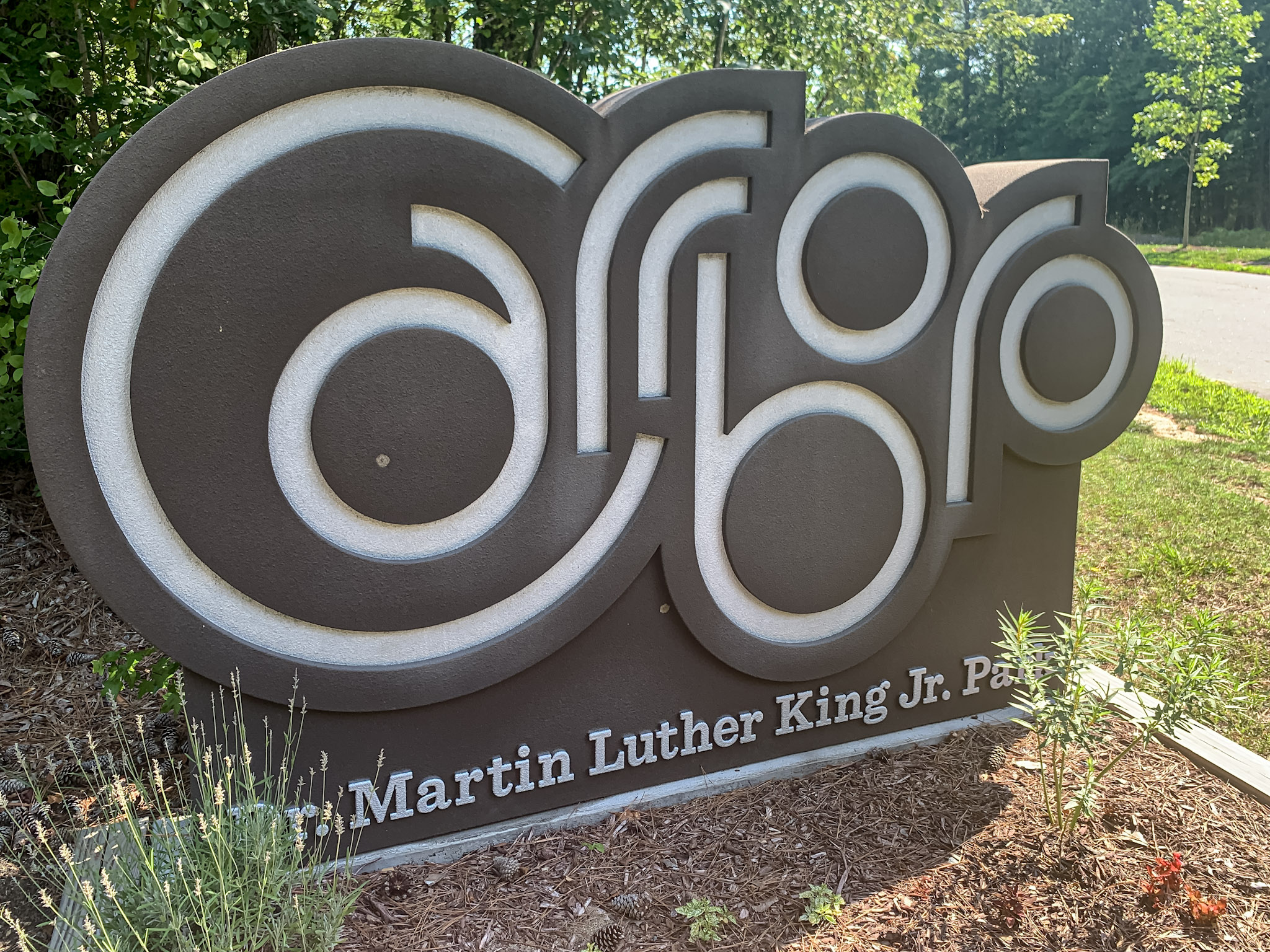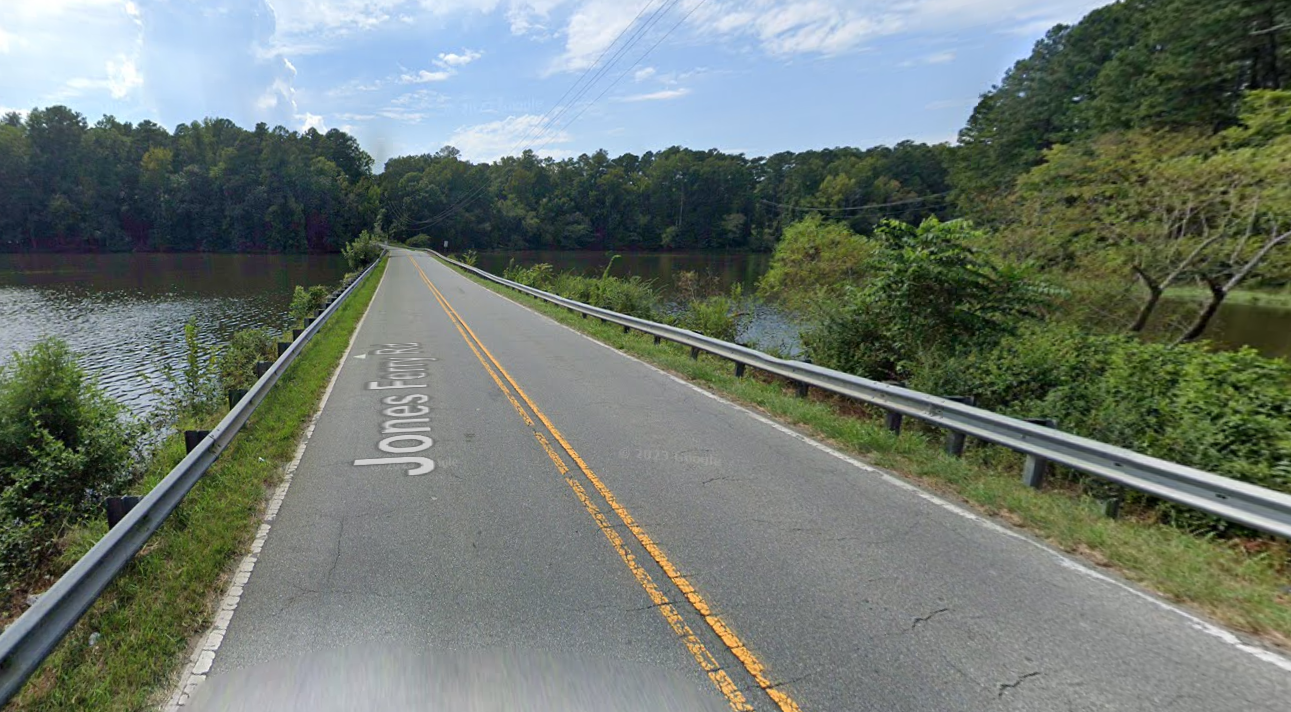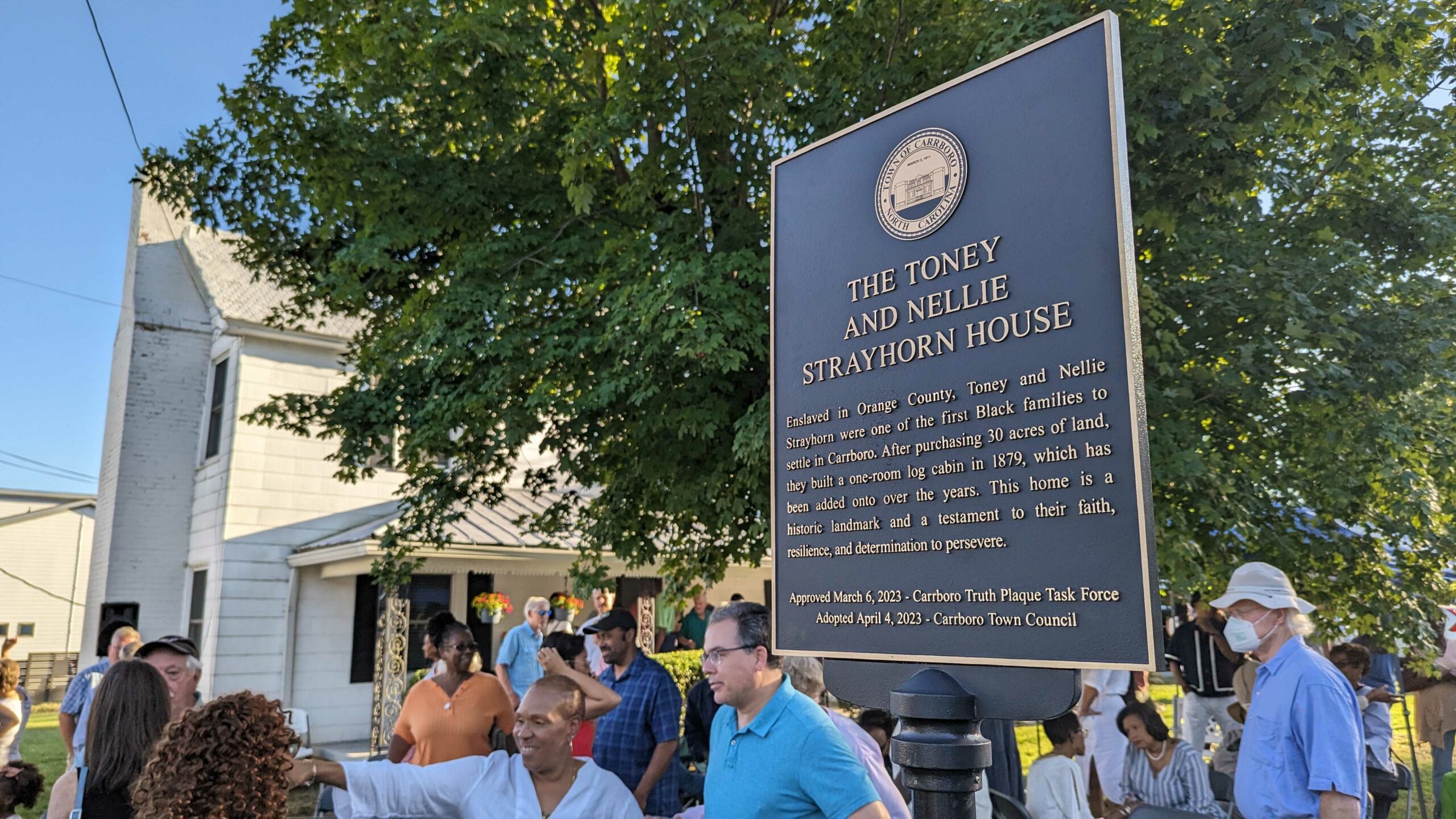Community members and family members gathered at 109 Jones Ferry Road on Friday night the Town of Carrboro unveiled its third marker in the local government’s series of “truth plaques,” which help contextualize the town’s history. Dozens of people filled the front lawn of the Strayhorn House swapping stories and jokes, with the celebration occasionally spilling into the street near downtown Carrboro.
Before long, everyone gathered around a sign covered in cloth planted near the sidewalk to hear from members of Carrboro’s Truth Plaque Committee and town officials. The Strayhorn House is the latest place to receive a marker telling a site’s significance within the town’s history and, often, highlighting a part of Black history sometimes whitewashed away.
Carrboro Mayor Damon Seils helped deliver some opening remarks and shared why he believes the home built in the 1870s – and the ceremony – stands out.
“This is a history that goes back farther than Carrboro does,” he said. “What I find most compelling about this truth plaque, even compared to the other important [ones] before it, is that it has such a direct and intimate tie to our present.”
The Strayhorn House dates back to 1879, when the patriarch and matriarch of the family bought several acres of land and constructed a one-room log cabin to live in. The house, which has been added onto by generations since, continues to be lived in by the family’s current matriarch: Delores Clark.
“I’ve been looking forward to it a long time,” she said on Friday. “My great-grandfather had 30 acres here. It’s just so sentimental to continue to live in – I promised my mother that, before she passed away. I grew up in this [house] and my mother did also.”
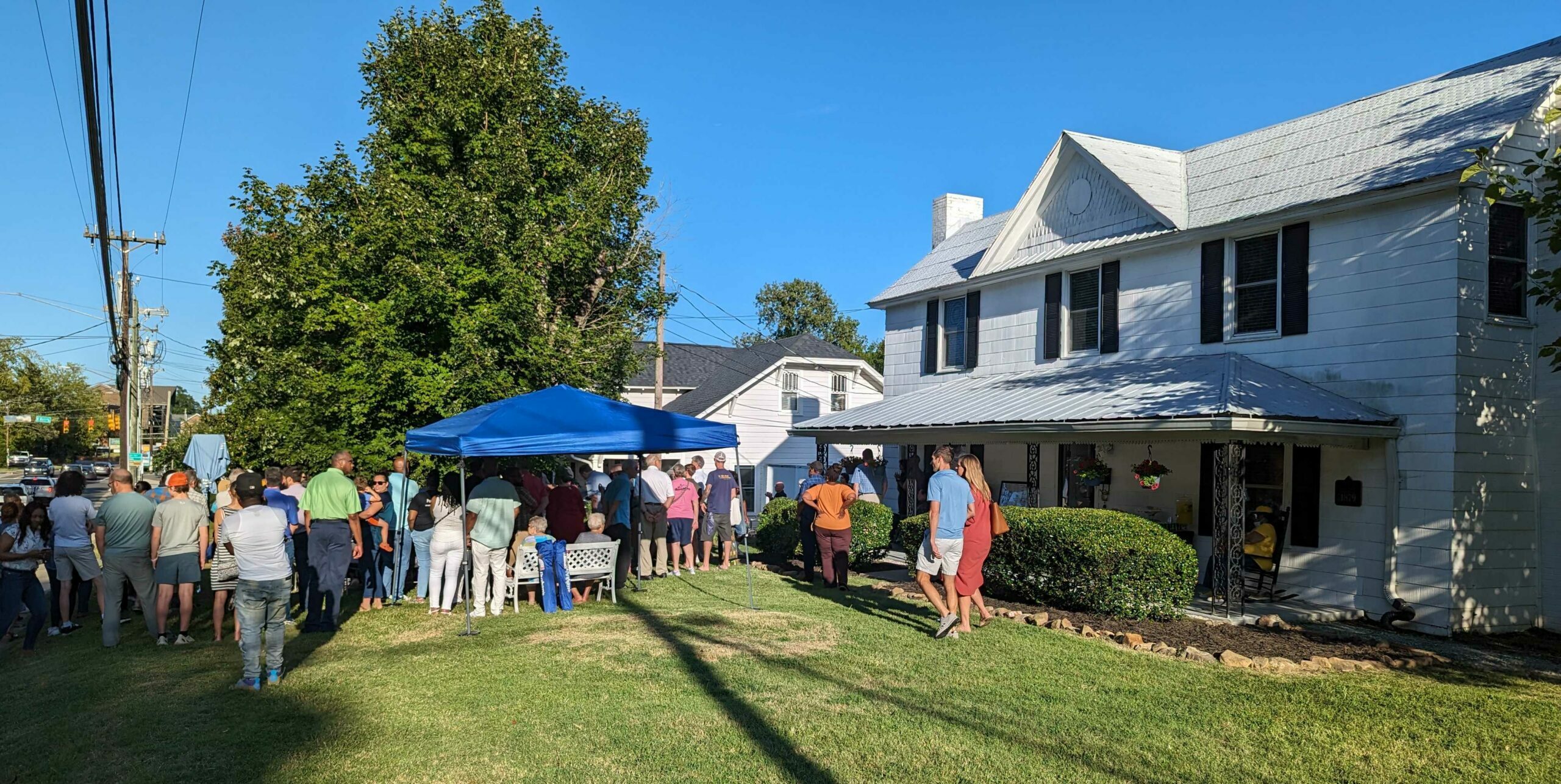
People gather on the lawn of the Strayhorn House at 109 Jones Ferry Road for the unveiling ceremony of a new truth plaque on Friday, September 1.
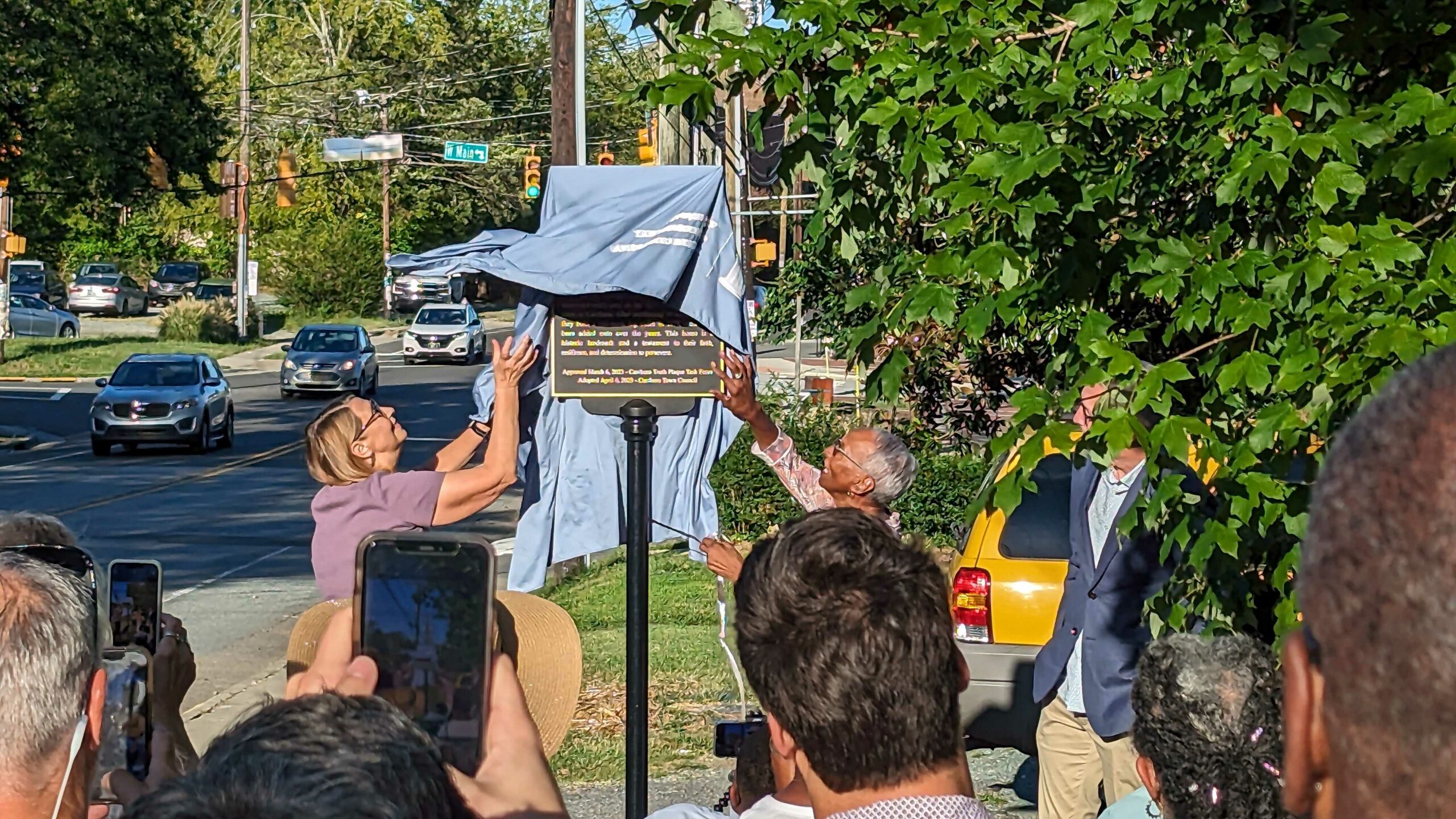
Members of Carrboro’s Truth Plaque Committee take the sheet off of the newest town marker at the Strayhorn House.

Members of Carrboro’s Truth Plaque Committee, including Delores Clark (center right) pose for a photo in front of the Strayhorn House following the ceremony dedicating its truth plaque.
Clark is one of the members of the town’s Truth Plaque committee, which was formed in 2017. While her home isn’t the first place to receive such a marker – one was installed at Carrboro Town Hall in 2019 and another on North Merritt Mill Road in 2021 – she said it did make the initial shortlist of places at the behest of her peers on the committee. Clark said that fact made her very proud, with those emotions culminating in Friday’s celebration with so many extended family members and community leaders together at the house.
After the plaque was unveiled, people began to wander into the Strayhorn House for a tour. There are several entrances and exits, unique hallways, and connections to rooms that stem from decades of expansion as six generations of family have since called the house their home.
The original one-room structure is still part of the house, with many family treasures within the tight space. On Saturday, people squeezed together to hear about the Strayhorn family’s history from great-great grandson Larry Clark. He shared the stories of Toney and Nellie Strayhorn, pointing to their portraits hanging on one of the walls. The pair were once enslaved before buying the dozens of acres of land outside Chapel Hill.
“Toney was a stonemason, a carpenter and a minister,” Clark described. “And Nellie was a housewife and she worked on the farm. They had a farm [which] produced cattle, pigs, and cotton as well. She would [also] help a local doctor, called Doctor Lloyd, and she would help him [as a] midwife whenever he needed her to assist him.”

Larry Clark (left) gives a tour for visitors of the one-room space that his great-great grandparents used to live in at the Strayhorn House.
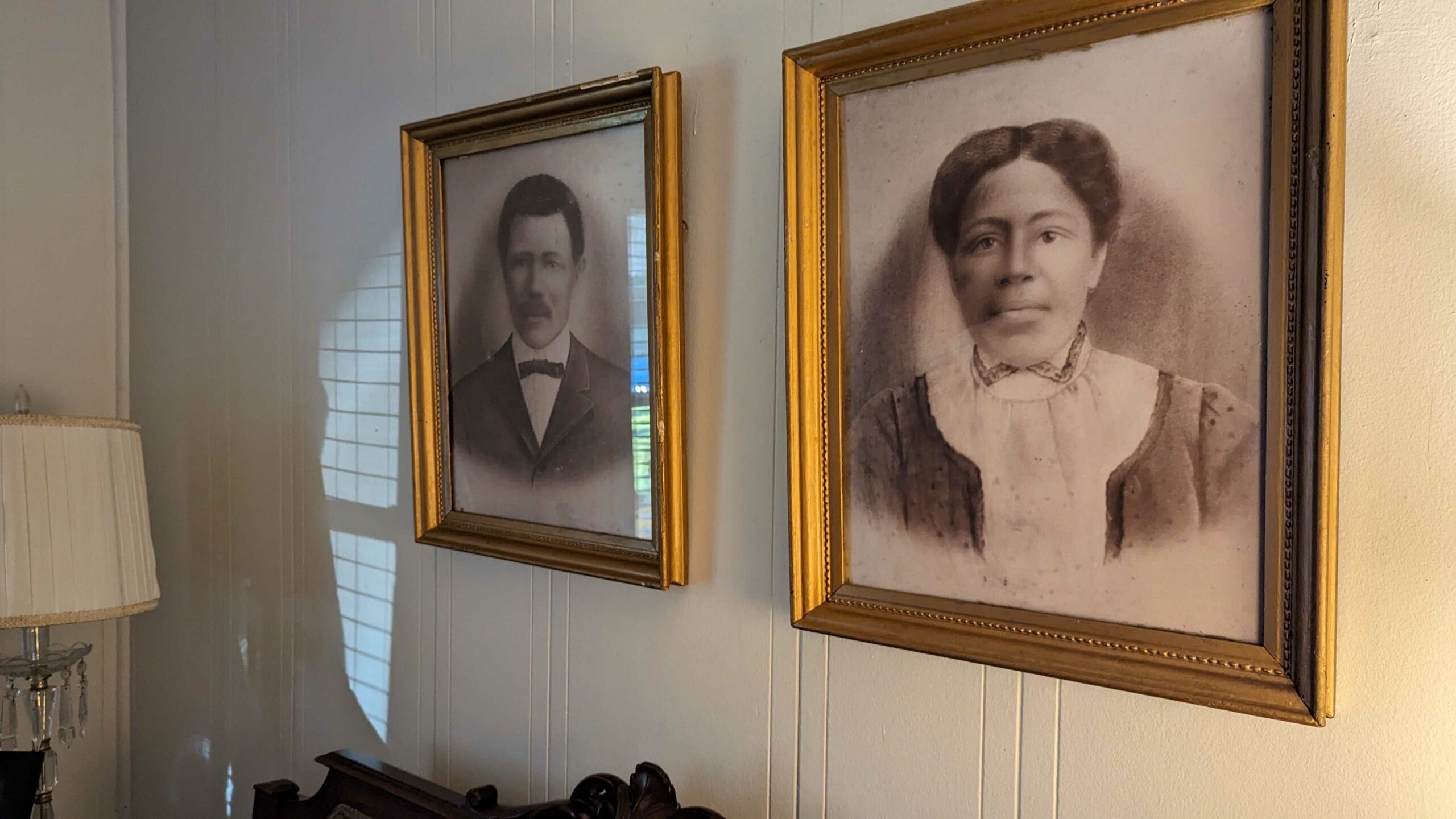
Portraits of Toney and Nellie Strayhorn hang on the walls of what once was their one-room log cabin. The Strayhorn House grew over the years to incorporate new rooms and facilities, and still is home to their great-granddaughter and great-great-great grandson.
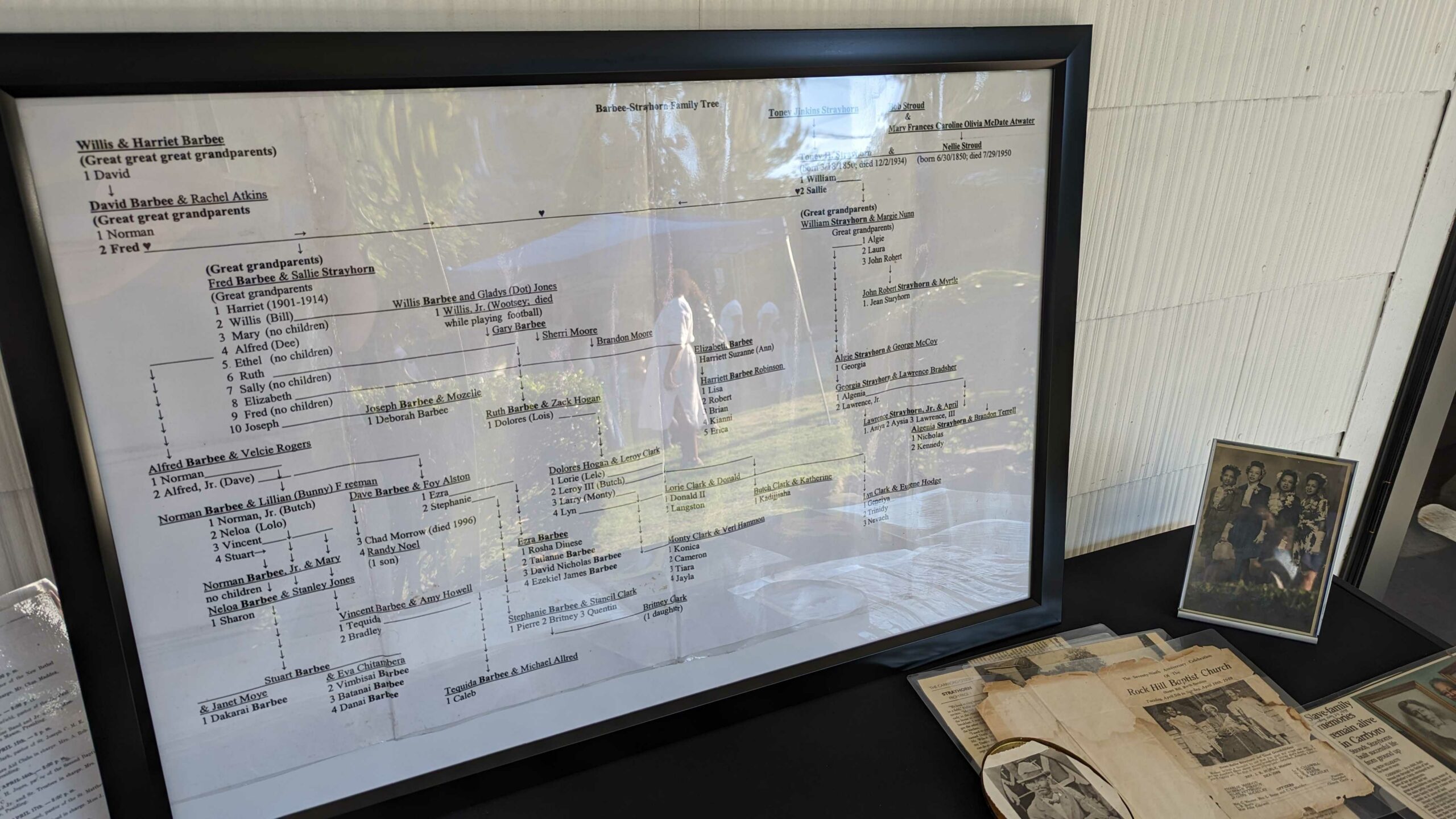
A framed photo of the Strayhorn family tree, which includes other long-time local families like the Barbees and Hogans.
Lorie Clark, the sister of Larry and daughter of Delores, said the fact that Toney, Nellie, and their descendants slowly added on to the house showed their forward-thinking and ability to adapt. She said between the opportunity to grow up in the historic home and have such close connection to her family tree allows Clark to feel like she’s “living their legacy.”
“Out of slavery, they were able to have the faith to say, ‘We’re going to live here, we’re going to work hard,’” she said. “And look at all the things they did for and with their family.”
Clark also pointed to all of the work it has taken over the decades to keep the house livable and in preserved shape. She said the Strayhorn House is undergoing a series of major projects, which have included fortifying its base and bringing several elements up to code. Both Clark and her mother credited Preservation Chapel Hill for its support in funding that upkeep and providing resources.
Despite those changes and additions over the years – both to the house and to the surrounding neighborhood – Georgia Bradsher said she still feels the same sense when she visits. A cousin to Delores Clark, Bradsher grew up next door and said she spent many days visiting the home of her great-grandparents.
“I considered both of them home,” she said. “I would come over and spend nights with her, and sometimes I might stay a week. As I look at it now, I still get the feeling when you come back.
“That’s the same place,” Bradsher continued, “although the mood has changed, there’s a difference, I still see it as the same place.”
Chapelboro.com does not charge subscription fees, and you can directly support our efforts in local journalism here. Want more of what you see on Chapelboro? Let us bring free local news and community information to you by signing up for our biweekly newsletter.


